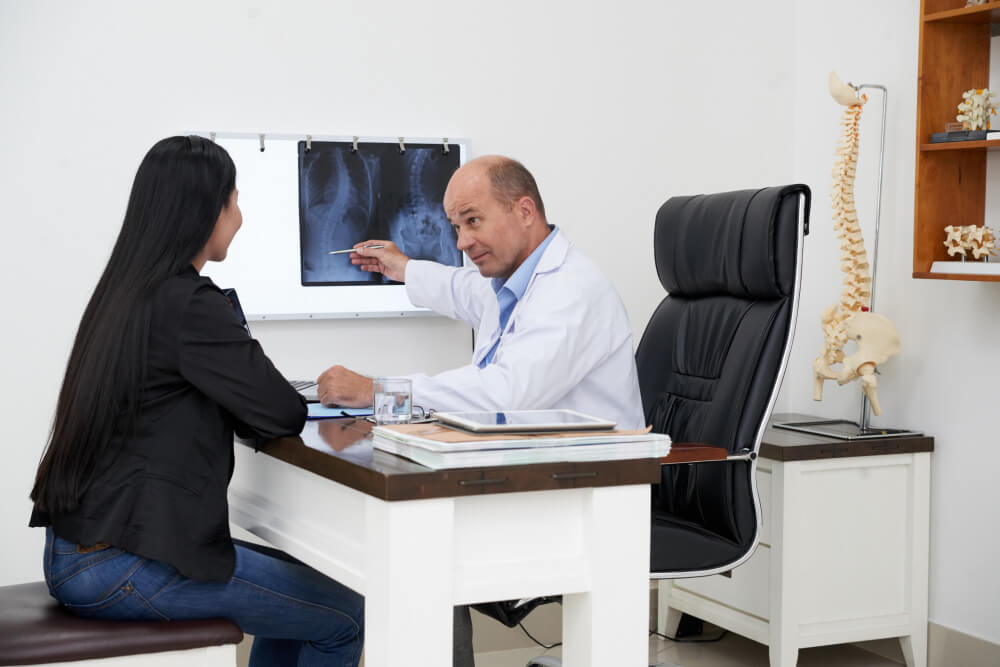Decoding the Disc Dilemma: Understanding Herniated Discs.
The human spine, a marvel of engineering, allows us to stand tall, twist and turn, and navigate the world with grace. But within this intricate structure lies a potential source of pain and discomfort: the herniated disc. This article delves into the world of herniated discs, exploring what they are, how they feel, and the crucial role orthopedic doctors play in alleviating their unwelcome grip.
Unpacking the Anatomy: Unveiling the Intervertebral Disc
Imagine your spine as a stack of building blocks, each block called a vertebra. Between these vertebrae sit the intervertebral discs, acting as shock absorbers and cushions for the spine. These discs are composed of a tough outer layer called the annulus fibrosus and a soft, jelly-like center called the nucleus pulposus.
The Herniation Hijinks: When Discs Go Rogue
Under normal circumstances, the annulus fibrosus keeps the nucleus pulposus contained. However, due to various factors like aging, trauma, or repetitive strain, the annulus can tear, allowing the nucleus pulposus to bulge or herniate. This herniated disc can then press on nearby nerves, causing a cascade of pain and discomfort.
The Symphony of Symptoms: Recognizing the Herniation’s Chorus
The location of the herniation dictates the specific symptoms you experience:
Back on the Attack: Lower Back Pain
A herniated disc in the lower back can cause:
- Aching or sharp pain in the lower back, often radiating down the buttocks and leg (sciatica).
- Numbness or tingling in the affected leg.
- Weakness in the leg muscles, making walking difficult.
Neck Nightmare: Pain in the Cervical Spine
A herniated disc in the neck can cause:
- Pain in the neck and radiating down the shoulder and arm.
- Headache, dizziness, and arm weakness.
- Difficulty turning your head or holding your head upright.
Beyond the Ache: Other Telltale Signs
In addition to pain, herniated discs can manifest as:
- Muscle spasms in the affected area.
- Difficulty bending or twisting.
- Changes in bowel or bladder function (rare).
From Diagnosis to Relief: The Orchestral Role of an Orthopedic Doctor
If you suspect a herniated disc, consulting an orthopedic doctor is crucial. They will conduct a thorough physical examination, ask about your symptoms, and may order imaging tests like X-rays, MRIs, or CT scans to confirm the diagnosis.
The Treatment Symphony: A Multifaceted Approach to Taming the Disc
The good news is that most herniated discs heal on their own with time and proper care. An orthopedic doctor can recommend a range of treatment options:
Rest and Recovery: The First Movement
Resting your back or neck allows the disc to heal and inflammation to subside. Avoiding strenuous activities and maintaining good posture are crucial during this phase.
Medication for the Melodic Relief:
Non-steroidal anti-inflammatory drugs (NSAIDs) and muscle relaxants can help manage pain and inflammation. In severe cases, stronger pain medication or steroid injections may be necessary.
Physical Therapy: Strengthening the Supporting Cast:
Physical therapy exercises can help strengthen the muscles around your spine, improve flexibility, and prevent future disc problems.
In Rare Cases, the Surgical Crescendo:
Surgery to remove the herniated disc material may be recommended for severe cases with persistent pain or nerve damage that doesn’t improve with conservative treatment.
Beyond the Doctor’s Baton: Taking Charge of Your Disc Health
Prevention is always better than cure. Here are some tips for keeping your discs healthy:
- Maintain good posture when sitting, standing, and lifting.
- Exercise regularly to strengthen your core muscles.
- Avoid lifting heavy objects improperly.
- Listen to your body and take breaks when you experience pain.
Conclusion: Living in Harmony with Your Spine: A Message of Hope
Herniated discs can be a pain, but they don’t have to dictate your life. By understanding the condition, recognizing the symptoms, and working with an orthopedic doctor, you can navigate the path to recovery and reclaim your pain-free movement. Remember, with proper care and attention to your spine’s health, you can keep the herniation blues at bay and enjoy a harmonious symphony of movement throughout your life.


